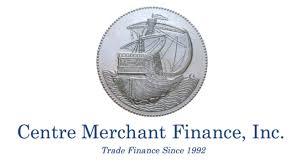Edited, memorised or added to reading queue
on 24-Jan-2018 (Wed)
Do you want BuboFlash to help you learning these things? Click here to log in or create user.
Flashcard 1644515429644
| status | not learned | measured difficulty | 37% [default] | last interval [days] | |||
|---|---|---|---|---|---|---|---|
| repetition number in this series | 0 | memorised on | scheduled repetition | ||||
| scheduled repetition interval | last repetition or drill |
Flashcard 1646939999500
| status | not learned | measured difficulty | 37% [default] | last interval [days] | |||
|---|---|---|---|---|---|---|---|
| repetition number in this series | 0 | memorised on | scheduled repetition | ||||
| scheduled repetition interval | last repetition or drill |
Factors and Multiples
tivities Dictionary Games Puzzles Worksheets ☰ Factors and Multiples Factors and multiples are different things. But they both involve multiplication: Factors are what we can multiply to get the number <span>Multiples are what we get after multiplying the number by an integer (not a fraction). Example: the positive factors, and some multiples, of 6: Factors: 1 × 6 = 6, so 1 and 6 are factors of 6 2 × 3 = 6, so 2 and 3 are factors of 6 Multiples: 0 × 6 = 0,
tivities Dictionary Games Puzzles Worksheets ☰ Factors and Multiples Factors and multiples are different things. But they both involve multiplication: Factors are what we can multiply to get the number <span>Multiples are what we get after multiplying the number by an integer (not a fraction). Example: the positive factors, and some multiples, of 6: Factors: 1 × 6 = 6, so 1 and 6 are factors of 6 2 × 3 = 6, so 2 and 3 are factors of 6 Multiples: 0 × 6 = 0,
| status | not read | reprioritisations | ||
|---|---|---|---|---|
| last reprioritisation on | suggested re-reading day | |||
| started reading on | finished reading on |
| status | not read | reprioritisations | ||
|---|---|---|---|---|
| last reprioritisation on | suggested re-reading day | |||
| started reading on | finished reading on |
| status | not read | reprioritisations | ||
|---|---|---|---|---|
| last reprioritisation on | suggested re-reading day | |||
| started reading on | finished reading on |
| status | not read | reprioritisations | ||
|---|---|---|---|---|
| last reprioritisation on | suggested re-reading day | |||
| started reading on | finished reading on |
| status | not read | reprioritisations | ||
|---|---|---|---|---|
| last reprioritisation on | suggested re-reading day | |||
| started reading on | finished reading on |
| status | not read | reprioritisations | ||
|---|---|---|---|---|
| last reprioritisation on | suggested re-reading day | |||
| started reading on | finished reading on |
| status | not read | reprioritisations | ||
|---|---|---|---|---|
| last reprioritisation on | suggested re-reading day | |||
| started reading on | finished reading on |
| status | not read | reprioritisations | ||
|---|---|---|---|---|
| last reprioritisation on | suggested re-reading day | |||
| started reading on | finished reading on |
| status | not read | reprioritisations | ||
|---|---|---|---|---|
| last reprioritisation on | suggested re-reading day | |||
| started reading on | finished reading on |
| status | not read | reprioritisations | ||
|---|---|---|---|---|
| last reprioritisation on | suggested re-reading day | |||
| started reading on | finished reading on |
| status | not read | reprioritisations | ||
|---|---|---|---|---|
| last reprioritisation on | suggested re-reading day | |||
| started reading on | finished reading on |
| status | not read | reprioritisations | ||
|---|---|---|---|---|
| last reprioritisation on | suggested re-reading day | |||
| started reading on | finished reading on |
| status | not read | reprioritisations | ||
|---|---|---|---|---|
| last reprioritisation on | suggested re-reading day | |||
| started reading on | finished reading on |
| status | not read | reprioritisations | ||
|---|---|---|---|---|
| last reprioritisation on | suggested re-reading day | |||
| started reading on | finished reading on |
| status | not read | reprioritisations | ||
|---|---|---|---|---|
| last reprioritisation on | suggested re-reading day | |||
| started reading on | finished reading on |
Reading 6 The Time Value of Money Introduction
As individuals, we often face decisions that involve saving money for a future use, or borrowing money for current consumption. We then need to determine the amount we need to invest, if we are saving, or the cost of borrowing, if we are shopping for a loan. As investment analysts, much of our work also involves evaluating transactions with present and future cash flows. When we place a value on any security, for example, we are attempting to determine the worth of a stream of future cash flows. To carry out all the above tasks accurately, we must understand the mathematics of time value of money problems. Money has time value in that individuals value a given amount of money more highly the earlier it is received. Therefore, a smaller amount of money now may be equivalent in value to a larger amount received at a future date. The time value of money as a topic in investment mathematics deals with equivalence relationships between cash flows with different dates. Mastery of time value of money concepts and techniques is essential for investment analysts. The reading1 is organized as follows: Section 2 introduces some terminology used throughout the reading and supplies some economic intuition for the variables we will discu
| status | not read | reprioritisations | ||
|---|---|---|---|---|
| last reprioritisation on | suggested re-reading day | |||
| started reading on | finished reading on |
Reading 15 The Firm and Market Structures Introduction
The purpose of this reading is to build an understanding of the importance of market structure. As different market structures result in different sets of choices facing a firm’s decision makers, an understanding of market structure is a powerful tool in analyzing issues such as a firm’s pricing of its products and, more broadly, its potential to increase profitability. In the long run, a firm’s profitability will be determined by the forces associated with the market structure within which it operates. In a highly competitive market, long-run profits will be driven down by the forces of competition. In less competitive markets, large profits are possible even in the long run; in the short run, any outcome is possible. Therefore, understanding the forces behind the market structure will aid the financial analyst in determining firms’ short- and long-term prospects. Section 2 introduces the analysis of market structures. The section addresses questions such as: What determines the degree of competition associated with each market struc
Flashcard 1737435254028
| status | not learned | measured difficulty | 37% [default] | last interval [days] | |||
|---|---|---|---|---|---|---|---|
| repetition number in this series | 0 | memorised on | scheduled repetition | ||||
| scheduled repetition interval | last repetition or drill |
Parent (intermediate) annotation
Open itErgodicity is the property that time series and ensemble averages coincide
Original toplevel document
Linear State Space Models – Quantitative Economicsverages x¯:=1T∑t=1Txtandy¯:=1T∑t=1Tytx¯:=1T∑t=1Txtandy¯:=1T∑t=1Tyt Do these time series averages converge to something interpretable in terms of our basic state-space representation? The answer depends on something called ergodicity <span>Ergodicity is the property that time series and ensemble averages coincide More formally, ergodicity implies that time series sample averages converge to their expectation under the stationary distribution In particular, 1T∑Tt=1xt→μ∞1T∑t=1Txt→μ∞ 1T∑Tt=1(
| status | not read | reprioritisations | ||
|---|---|---|---|---|
| last reprioritisation on | suggested re-reading day | |||
| started reading on | finished reading on |
Reading 55 Fundamentals of Credit Analysis (Intro)
With bonds outstanding worth many trillions of US dollars, the debt markets play a critical role in the global economy. Companies and governments raise capital in the debt market to fund current operations; buy equipment; build factories, roads, bridges, airports, and hospitals; acquire assets, and so on. By channeling savings into productive investments, the debt markets facilitate economic growth. Credit analysis has a crucial function in the debt capital markets—efficiently allocating capital by properly assessing credit risk, pricing it accordingly, and repricing it as risks change. How do fixed-income investors determine the riskiness of that debt, and how do they decide what they need to earn as compensation for that risk? This reading covers basic principles of credit analysis, which may be broadly defined as the process by which credit risk is evaluated. Readers will be introduced to the definition of credit risk, the interpretation of credit ratings, the four Cs of traditional credit analysis, and key financial measures and ratios used in credit analysis. The reading explains, among other things, how to compare bond issuer creditworthiness within a given industry as well as across industries and how credit risk is priced in the bond market. The reading focuses primarily on analysis of corporate debt; however, credit analysis of sovereign and non-sovereign, particularly municipal, government bonds will also be addressed. Structured finance, a segment of the debt markets that includes securities backed by pools of assets, such as residential and commercial mortgages as well as other consumer loans, will not be covered here. The key components of credit risk—default probability and loss severity—are introduced in the next section along with such credit-related risks as spread risk, credit migra
| status | not read | reprioritisations | ||
|---|---|---|---|---|
| last reprioritisation on | suggested re-reading day | |||
| started reading on | finished reading on |
Reading 55 Fundamentals of Credit Analysis (Intro)
will also be addressed. Structured finance, a segment of the debt markets that includes securities backed by pools of assets, such as residential and commercial mortgages as well as other consumer loans, will not be covered here. <span>The key components of credit risk—default probability and loss severity—are introduced in the next section along with such credit-related risks as spread risk, credit migration risk, and liquidity risk. Section 3 discusses the relationship between credit risk and the capital structure of the firm. Credit ratings and the role of credit rating agencies are addressed in Section 4. Section 5 focuses on the process of analyzing the credit risk of corporations, whereas Section 6 examines the impact of credit spreads on risk and return. Special considerations applicable to the analysis of (i) high-yield (low-quality) corporate bonds and (ii) government bonds are presented in Section 7. Section 8 gives a brief summary, and a set of review questions concludes the reading. <span><body><html>
| status | not read | reprioritisations | ||
|---|---|---|---|---|
| last reprioritisation on | suggested re-reading day | |||
| started reading on | finished reading on |
| status | not read | reprioritisations | ||
|---|---|---|---|---|
| last reprioritisation on | suggested re-reading day | |||
| started reading on | finished reading on |
Bellman equation - Wikipedia
edit source] To understand the Bellman equation, several underlying concepts must be understood. First, any optimization problem has some objective: minimizing travel time, minimizing cost, maximizing profits, maximizing utility, et cetera. <span>The mathematical function that describes this objective is called the objective function. Dynamic programming breaks a multi-period planning problem into simpler steps at different points in time. Therefore, it requires keeping track of how the decision situation is evolvi
| status | not read | reprioritisations | ||
|---|---|---|---|---|
| last reprioritisation on | suggested re-reading day | |||
| started reading on | finished reading on |
Bellman equation - Wikipedia
objective is called the objective function. Dynamic programming breaks a multi-period planning problem into simpler steps at different points in time. Therefore, it requires keeping track of how the decision situation is evolving over time. <span>The information about the current situation which is needed to make a correct decision is called the "state". [1] [2] For example, to decide how much to consume and spend at each point in time, people would need to know (among other things) their initial wealth. Therefore, wealth
| status | not read | reprioritisations | ||
|---|---|---|---|---|
| last reprioritisation on | suggested re-reading day | |||
| started reading on | finished reading on |
Bellman equation - Wikipedia
would need to know (among other things) their initial wealth. Therefore, wealth ( W ) {\displaystyle (W)} would be one of their state variables, but there would probably be others. <span>The variables chosen at any given point in time are often called the control variables. For example, given their current wealth, people might decide how much to consume now. Choosing the control variables now may be equivalent to choosing the next state; more generally, th
| status | not read | reprioritisations | ||
|---|---|---|---|---|
| last reprioritisation on | suggested re-reading day | |||
| started reading on | finished reading on |
Bellman equation - Wikipedia
to the current control. For example, in the simplest case, today's wealth (the state) and consumption (the control) might exactly determine tomorrow's wealth (the new state), though typically other factors will affect tomorrow's wealth too. <span>The dynamic programming approach describes the optimal plan by finding a rule that tells what the controls should be, given any possible value of the state. For example, if consumption (c) depends only on wealth (W), we would seek a rule c ( W ) {\displaystyle c(W)} that gi
| status | not read | reprioritisations | ||
|---|---|---|---|---|
| last reprioritisation on | suggested re-reading day | |||
| started reading on | finished reading on |
Bellman equation - Wikipedia
ue of the state. For example, if consumption (c) depends only on wealth (W), we would seek a rule c ( W ) {\displaystyle c(W)} that gives consumption as a function of wealth. <span>Such a rule, determining the controls as a function of the states, is called a policy function (See Bellman, 1957, Ch. III.2). [1] Finally, by definition, the optimal decision rule is the one that achieves the best possible value of the objective. For example, if someone choose
| status | not read | reprioritisations | ||
|---|---|---|---|---|
| last reprioritisation on | suggested re-reading day | |||
| started reading on | finished reading on |
Bellman equation - Wikipedia
mathematical function, such as a utility function), then each level of wealth will be associated with some highest possible level of happiness, H ( W ) {\displaystyle H(W)} . <span>The best possible value of the objective, written as a function of the state, is called the value function. Richard Bellman showed that a dynamic optimization problem in discrete time can be stated in a recursive, step-by-step form known as backward induction by writing down the relationshi
| status | not read | reprioritisations | ||
|---|---|---|---|---|
| last reprioritisation on | suggested re-reading day | |||
| started reading on | finished reading on |
Bellman equation - Wikipedia
ghest possible level of happiness, H ( W ) {\displaystyle H(W)} . The best possible value of the objective, written as a function of the state, is called the value function. <span>Richard Bellman showed that a dynamic optimization problem in discrete time can be stated in a recursive, step-by-step form known as backward induction by writing down the relationship between the value function in one period and the value function in the next period. The relationship between these two value functions is called the "Bellman equation". In this approach, the optimal policy in the last time period is specified in advance as a function of the state variable's value at that time, and the resulting optimal value of the obj
Flashcard 1737650212108
| status | not learned | measured difficulty | 37% [default] | last interval [days] | |||
|---|---|---|---|---|---|---|---|
| repetition number in this series | 0 | memorised on | scheduled repetition | ||||
| scheduled repetition interval | last repetition or drill |
Parent (intermediate) annotation
Open itThe mathematical function that describes the optimization objective is called the objective function.
Original toplevel document
Bellman equation - Wikipediaedit source] To understand the Bellman equation, several underlying concepts must be understood. First, any optimization problem has some objective: minimizing travel time, minimizing cost, maximizing profits, maximizing utility, et cetera. <span>The mathematical function that describes this objective is called the objective function. Dynamic programming breaks a multi-period planning problem into simpler steps at different points in time. Therefore, it requires keeping track of how the decision situation is evolvi
Flashcard 1737653357836
| status | not learned | measured difficulty | 37% [default] | last interval [days] | |||
|---|---|---|---|---|---|---|---|
| repetition number in this series | 0 | memorised on | scheduled repetition | ||||
| scheduled repetition interval | last repetition or drill |
Parent (intermediate) annotation
Open itThe information about the current situation which is needed to make a correct decision is called the "state"
Original toplevel document
Bellman equation - Wikipediaobjective is called the objective function. Dynamic programming breaks a multi-period planning problem into simpler steps at different points in time. Therefore, it requires keeping track of how the decision situation is evolving over time. <span>The information about the current situation which is needed to make a correct decision is called the "state". [1] [2] For example, to decide how much to consume and spend at each point in time, people would need to know (among other things) their initial wealth. Therefore, wealth
Flashcard 1737654930700
| status | not learned | measured difficulty | 37% [default] | last interval [days] | |||
|---|---|---|---|---|---|---|---|
| repetition number in this series | 0 | memorised on | scheduled repetition | ||||
| scheduled repetition interval | last repetition or drill |
Parent (intermediate) annotation
Open itThe information about the current situation which is needed to make a correct decision is called the "state"
Original toplevel document
Bellman equation - Wikipediaobjective is called the objective function. Dynamic programming breaks a multi-period planning problem into simpler steps at different points in time. Therefore, it requires keeping track of how the decision situation is evolving over time. <span>The information about the current situation which is needed to make a correct decision is called the "state". [1] [2] For example, to decide how much to consume and spend at each point in time, people would need to know (among other things) their initial wealth. Therefore, wealth
Flashcard 1737656503564
| status | not learned | measured difficulty | 37% [default] | last interval [days] | |||
|---|---|---|---|---|---|---|---|
| repetition number in this series | 0 | memorised on | scheduled repetition | ||||
| scheduled repetition interval | last repetition or drill |
Parent (intermediate) annotation
Open itThe variables chosen at any given point in time are often called the control variables.
Original toplevel document
Bellman equation - Wikipediawould need to know (among other things) their initial wealth. Therefore, wealth ( W ) {\displaystyle (W)} would be one of their state variables, but there would probably be others. <span>The variables chosen at any given point in time are often called the control variables. For example, given their current wealth, people might decide how much to consume now. Choosing the control variables now may be equivalent to choosing the next state; more generally, th
Flashcard 1737658076428
| status | not learned | measured difficulty | 37% [default] | last interval [days] | |||
|---|---|---|---|---|---|---|---|
| repetition number in this series | 0 | memorised on | scheduled repetition | ||||
| scheduled repetition interval | last repetition or drill |
Parent (intermediate) annotation
Open itThe dynamic programming approach describes the optimal plan by finding a rule that tells what the controls should be, given any possible value of the state.
Original toplevel document
Bellman equation - Wikipediato the current control. For example, in the simplest case, today's wealth (the state) and consumption (the control) might exactly determine tomorrow's wealth (the new state), though typically other factors will affect tomorrow's wealth too. <span>The dynamic programming approach describes the optimal plan by finding a rule that tells what the controls should be, given any possible value of the state. For example, if consumption (c) depends only on wealth (W), we would seek a rule c ( W ) {\displaystyle c(W)} that gi
Flashcard 1737659649292
| status | not learned | measured difficulty | 37% [default] | last interval [days] | |||
|---|---|---|---|---|---|---|---|
| repetition number in this series | 0 | memorised on | scheduled repetition | ||||
| scheduled repetition interval | last repetition or drill |
Parent (intermediate) annotation
Open itThe dynamic programming approach describes the optimal plan by finding a rule that tells what the controls should be, given any possible value of the state.
Original toplevel document
Bellman equation - Wikipediato the current control. For example, in the simplest case, today's wealth (the state) and consumption (the control) might exactly determine tomorrow's wealth (the new state), though typically other factors will affect tomorrow's wealth too. <span>The dynamic programming approach describes the optimal plan by finding a rule that tells what the controls should be, given any possible value of the state. For example, if consumption (c) depends only on wealth (W), we would seek a rule c ( W ) {\displaystyle c(W)} that gi
Flashcard 1737661222156
| status | not learned | measured difficulty | 37% [default] | last interval [days] | |||
|---|---|---|---|---|---|---|---|
| repetition number in this series | 0 | memorised on | scheduled repetition | ||||
| scheduled repetition interval | last repetition or drill |
Parent (intermediate) annotation
Open itThe dynamic programming approach describes the optimal plan by finding a rule that tells what the controls should be, given any possible value of the state.
Original toplevel document
Bellman equation - Wikipediato the current control. For example, in the simplest case, today's wealth (the state) and consumption (the control) might exactly determine tomorrow's wealth (the new state), though typically other factors will affect tomorrow's wealth too. <span>The dynamic programming approach describes the optimal plan by finding a rule that tells what the controls should be, given any possible value of the state. For example, if consumption (c) depends only on wealth (W), we would seek a rule c ( W ) {\displaystyle c(W)} that gi
Flashcard 1737662795020
| status | not learned | measured difficulty | 37% [default] | last interval [days] | |||
|---|---|---|---|---|---|---|---|
| repetition number in this series | 0 | memorised on | scheduled repetition | ||||
| scheduled repetition interval | last repetition or drill |
Parent (intermediate) annotation
Open itSuch a rule, determining the controls as a function of the states, is called a policy function
Original toplevel document
Bellman equation - Wikipediaue of the state. For example, if consumption (c) depends only on wealth (W), we would seek a rule c ( W ) {\displaystyle c(W)} that gives consumption as a function of wealth. <span>Such a rule, determining the controls as a function of the states, is called a policy function (See Bellman, 1957, Ch. III.2). [1] Finally, by definition, the optimal decision rule is the one that achieves the best possible value of the objective. For example, if someone choose
Flashcard 1737664367884
| status | not learned | measured difficulty | 37% [default] | last interval [days] | |||
|---|---|---|---|---|---|---|---|
| repetition number in this series | 0 | memorised on | scheduled repetition | ||||
| scheduled repetition interval | last repetition or drill |
Parent (intermediate) annotation
Open itThe best possible value of the objective, written as a function of the state, is called the value function.
Original toplevel document
Bellman equation - Wikipediamathematical function, such as a utility function), then each level of wealth will be associated with some highest possible level of happiness, H ( W ) {\displaystyle H(W)} . <span>The best possible value of the objective, written as a function of the state, is called the value function. Richard Bellman showed that a dynamic optimization problem in discrete time can be stated in a recursive, step-by-step form known as backward induction by writing down the relationshi
Flashcard 1737665940748
| status | not learned | measured difficulty | 37% [default] | last interval [days] | |||
|---|---|---|---|---|---|---|---|
| repetition number in this series | 0 | memorised on | scheduled repetition | ||||
| scheduled repetition interval | last repetition or drill |
Parent (intermediate) annotation
Open itThe best possible value of the objective, written as a function of the state, is called the value function.
Original toplevel document
Bellman equation - Wikipediamathematical function, such as a utility function), then each level of wealth will be associated with some highest possible level of happiness, H ( W ) {\displaystyle H(W)} . <span>The best possible value of the objective, written as a function of the state, is called the value function. Richard Bellman showed that a dynamic optimization problem in discrete time can be stated in a recursive, step-by-step form known as backward induction by writing down the relationshi
Flashcard 1737667513612
| status | not learned | measured difficulty | 37% [default] | last interval [days] | |||
|---|---|---|---|---|---|---|---|
| repetition number in this series | 0 | memorised on | scheduled repetition | ||||
| scheduled repetition interval | last repetition or drill |
Parent (intermediate) annotation
Open itRichard Bellman showed that a dynamic optimization problem in discrete time can be stated in a recursive, step-by-step form known as backward induction by writing down the relationship between the value function in one period and the value function in the next period. The relationship between these two
Original toplevel document
Bellman equation - Wikipediaghest possible level of happiness, H ( W ) {\displaystyle H(W)} . The best possible value of the objective, written as a function of the state, is called the value function. <span>Richard Bellman showed that a dynamic optimization problem in discrete time can be stated in a recursive, step-by-step form known as backward induction by writing down the relationship between the value function in one period and the value function in the next period. The relationship between these two value functions is called the "Bellman equation". In this approach, the optimal policy in the last time period is specified in advance as a function of the state variable's value at that time, and the resulting optimal value of the obj
| status | not read | reprioritisations | ||
|---|---|---|---|---|
| last reprioritisation on | suggested re-reading day | |||
| started reading on | finished reading on |
Reading 7 Discounted Cash Flow Applications Introduction
As investment analysts, much of our work includes evaluating transactions involving present and future cash flows. In the reading on the time value of money (TVM), we presented the mathematics needed to solve those problems and illustrated the techniques for the major problem types. In this reading we turn to applications. Analysts must master the numerous applications of TVM or discounted cash flow analysis in equity, fixed income, and derivatives analysis as they study each of those topics individually. In this reading, we present a selection of important TVM applications: net present value and internal rate of return as tools for evaluating cash flow streams, portfolio return measurement, and the calculation of money market yields. Important in themselves, these applications also introduce concepts that reappear in many other investment contexts. The reading is organized as follows. Section 2 introduces two key TVM concepts, net present value and internal rate of return. Building on these concepts, Section 3 discuss
| status | not read | reprioritisations | ||
|---|---|---|---|---|
| last reprioritisation on | suggested re-reading day | |||
| started reading on | finished reading on |
Reading 7 Discounted Cash Flow Applications Introduction
ools for evaluating cash flow streams, portfolio return measurement, and the calculation of money market yields. Important in themselves, these applications also introduce concepts that reappear in many other investment contexts. <span>The reading is organized as follows. Section 2 introduces two key TVM concepts, net present value and internal rate of return. Building on these concepts, Section 3 discusses a key topic in investment management, portfolio return measurement. Investment managers often face the task of investing funds for the short term; to understand the choices available, they need to understand the calculation of money market yields. The reading thus concludes with a discussion of that topic in Section 4. <span><body><html>
| status | not read | reprioritisations | ||
|---|---|---|---|---|
| last reprioritisation on | suggested re-reading day | |||
| started reading on | finished reading on |
Reading 8 Statistical Concepts and Market Returns Introduction
Statistical methods provide a powerful set of tools for analyzing data and drawing conclusions from them. Whether we are analyzing asset returns, earnings growth rates, commodity prices, or any other financial data, statistical tools help us quantify and communicate the data’s important features. This reading presents the basics of describing and analyzing data, the branch of statistics known as descriptive statistics. The reading supplies a set of useful concepts and tools, illustrated in a variety of investment contexts. One theme of our presentation, reflected in the reading’s title, is the demonstration of the statistical methods that allow us to summarize return distributions.1 We explore four properties of return distributions: where the returns are centered (central tendency); how far returns are dispersed from their center (dispersion); whether the distribution of returns is symmetrically shaped or lopsided (skewness); and whether extreme outcomes are likely (kurtosis). These same concepts are generally applicable to the distributions of other types of data, too. The reading is organized as follows. After defining some basic concepts in Section 2, in Sections 3 and 4 we discuss the presentation of data: Section 3 describes the organ
| status | not read | reprioritisations | ||
|---|---|---|---|---|
| last reprioritisation on | suggested re-reading day | |||
| started reading on | finished reading on |
Reading 8 Statistical Concepts and Market Returns Introduction
symmetrically shaped or lopsided (skewness); and whether extreme outcomes are likely (kurtosis). These same concepts are generally applicable to the distributions of other types of data, too. <span>The reading is organized as follows. After defining some basic concepts in Section 2, in Sections 3 and 4 we discuss the presentation of data: Section 3 describes the organization of data in a table format, and Section 4 describes the graphic presentation of data. We then turn to the quantitative description of how data are distributed: Section 5 focuses on measures that quantify where data are centered, or measures of central tendency. Section 6 presents other measures that describe the location of data. Section 7 presents measures that quantify the degree to which data are dispersed. Sections 8 and 9 describe additional measures that provide a more accurate picture of data. Section 10 provides investment applications of concepts introduced in Section 5. <span><body><html>
| status | not read | reprioritisations | ||
|---|---|---|---|---|
| last reprioritisation on | suggested re-reading day | |||
| started reading on | finished reading on |
Reading 9 Probability Concepts Introduction
All investment decisions are made in an environment of risk. The tools that allow us to make decisions with consistency and logic in this setting come under the heading of probability. This reading presents the essential probability tools needed to frame and address many real-world problems involving risk. We illustrate how these tools apply to such issues as predicting investment manager performance, forecasting financial variables, and pricing bonds so that they fairly compensate bondholders for default risk. Our focus is practical. We explore in detail the concepts that are most important to investment research and practice. One such concept is independence, as it relates to the predictability of returns and financial variables. Another is expectation, as analysts continually look to the future in their analyses and decisions. Analysts and investors must also cope with variability. We present variance, or dispersion around expectation, as a risk concept important in investments. The reader will acquire specific skills in using portfolio expected return and variance. The basic tools of probability, including expected value and variance, are set out in Section 2 of this reading. Section 3 introduces covariance and correlation (measures o
| status | not read | reprioritisations | ||
|---|---|---|---|---|
| last reprioritisation on | suggested re-reading day | |||
| started reading on | finished reading on |
Reading 9 Probability Concepts Introduction
nvestors must also cope with variability. We present variance, or dispersion around expectation, as a risk concept important in investments. The reader will acquire specific skills in using portfolio expected return and variance. <span>The basic tools of probability, including expected value and variance, are set out in Section 2 of this reading. Section 3 introduces covariance and correlation (measures of relatedness between random quantities) and the principles for calculating portfolio expected return and variance. Two topics end the reading: Bayes’ formula and outcome counting. Bayes’ formula is a procedure for updating beliefs based on new information. In several areas, including a widely used option-pricing model, the calculation of probabilities involves defining and counting outcomes. The reading ends with a discussion of principles and shortcuts for counting. <span><body><html>
| status | not read | reprioritisations | ||
|---|---|---|---|---|
| last reprioritisation on | suggested re-reading day | |||
| started reading on | finished reading on |
Reading 12 Hypothesis Testing Intro
Analysts often confront competing ideas about how financial markets work. Some of these ideas develop through personal research or experience with markets; others come from interactions with colleagues; and many others appear in the professional literature on finance and investments. In general, how can an analyst decide whether statements about the financial world are probably true or probably false? When we can reduce an idea or assertion to a definite statement about the value of a quantity, such as an underlying or population mean, the idea becomes a statistically testable statement or hypothesis. The analyst may want to explore questions such as the following: Is the underlying mean return on this mutual fund different from the underlying mean return on its benchmark? Did the volatility of returns on this stock change after the stock was added to a stock market index? Are a security’s bid-ask spreads related to the number of dealers making a market in the security? Do data from a national bond market support a prediction of an economic theory about the term structure of interest rates (the relationship between yield and maturity)? To address these questions, we use the concepts and tools of hypothesis testing. Hypothesis testing is part of statistical inference, the process of making judgments about a larger group (a population) on the basis of a smaller group actually observed (a sample). The concepts and tools of hypothesis testing provide an objective means to gauge whether the available evidence supports the hypothesis. After a statistical test of a hypothesis we should have a clearer idea of the probability that a hypothesis is true or not, although our conclusion always stops short of certainty. Hypothesis testing has been a powerful tool in the advancement of investment knowledge and science. As Robert L. Kahn of the Institute for Social Research (Ann Arbor, Michigan) has written, “The mill of science grinds only when hypothesis and data are in continuous and abrasive contact.” The main emphases of this reading are the framework of hypothesis testing and tests concerning mean and variance, two quantities frequently used in investments. We give an
| status | not read | reprioritisations | ||
|---|---|---|---|---|
| last reprioritisation on | suggested re-reading day | |||
| started reading on | finished reading on |
Reading 12 Hypothesis Testing Intro
ent of investment knowledge and science. As Robert L. Kahn of the Institute for Social Research (Ann Arbor, Michigan) has written, “The mill of science grinds only when hypothesis and data are in continuous and abrasive contact.” <span>The main emphases of this reading are the framework of hypothesis testing and tests concerning mean and variance, two quantities frequently used in investments. We give an overview of the procedure of hypothesis testing in the next section. We then address testing hypotheses about the mean and hypotheses about the differences between means. In the fourth section of this reading, we address testing hypotheses about a single variance and hypotheses about the differences between variances. We end the reading with an overview of some other important issues and techniques in statistical inference. <span><body><html>
| status | not read | reprioritisations | ||
|---|---|---|---|---|
| last reprioritisation on | suggested re-reading day | |||
| started reading on | finished reading on |
Reading 18 Monetary and Fiscal Policy Introduction
The economic decisions of households can have a significant impact on an economy. For example, a decision on the part of households to consume more and to save less can lead to an increase in employment, investment, and ultimately profits. Equally, the investment decisions made by corporations can have an important impact on the real economy and on corporate profits. But individual corporations can rarely affect large economies on their own; the decisions of a single household concerning consumption will have a negligible impact on the wider economy. By contrast, the decisions made by governments can have an enormous impact on even the largest and most developed of economies for two main reasons. First, the public sectors of most developed economies normally employ a significant proportion of the population, and they are usually responsible for a significant proportion of spending in an economy. Second, governments are also the largest borrowers in world debt markets. Exhibit 1 gives some idea of the scale of government borrowing and spending. Exhibit 1 Panel A. Central Government Debt to GDP, 2009 Panel B. Public Sector Spending to GDP, 2009 Note: All data are for 2009. Source: Thomson Financial. Government policy is ultimately expressed through its borrowing and spending activities. In this reading, we identify and discuss two types of government policy that can affect the macroeconomy and financial markets: monetary policy and fiscal policy. Monetary policy refers to central bank activities that are directed toward influencing the quantity of money and credit in an economy.1 By contrast, fiscal policy refers to the government’s decisions about taxation and spending. Both monetary and fiscal policies are used to regulate economic activity over time. They can be used to accelerate growth when an economy starts to slow or to moderate growth and activity when an economy starts to overheat. In addition, fiscal policy can be used to redistribute income and wealth. The overarching goal of both monetary and fiscal policy is normally the creation of an economic environment where growth is stable and positive and inflation is stable and low. Crucially, the aim is therefore to steer the underlying economy so that it does not experience economic booms that may be followed by extended periods of low or negative growth and high levels of unemployment. In such a stable economic environment, householders can feel secure in their consumption and saving decisions, while corporations can concentrate on their investment decisions, on making their regular coupon payments to their bond holders and on making profits for their shareholders. The challenges to achieving this overarching goal are many. Not only are economies frequently buffeted by shocks (such as oil price jumps), but some economists believe that natural cycles in the economy also exist. Moreover, there are plenty of examples from history where government policies—either monetary, fiscal, or both—have exacerbated an economic expansion that eventually led to damaging consequences for the real economy, for financial markets, and for investors. The balance of the reading is organized as follows. Section 2 provides an introduction to monetary policy and related topics. Section 3 presents fiscal policy. The interact
| status | not read | reprioritisations | ||
|---|---|---|---|---|
| last reprioritisation on | suggested re-reading day | |||
| started reading on | finished reading on |
Reading 18 Monetary and Fiscal Policy Introduction
examples from history where government policies—either monetary, fiscal, or both—have exacerbated an economic expansion that eventually led to damaging consequences for the real economy, for financial markets, and for investors. <span>The balance of the reading is organized as follows. Section 2 provides an introduction to monetary policy and related topics. Section 3 presents fiscal policy. The interactions between monetary policy and fiscal policy are the subject of Section 4. A summary and practice problems conclude the reading. <span><body><html>
| status | not read | reprioritisations | ||
|---|---|---|---|---|
| last reprioritisation on | suggested re-reading day | |||
| started reading on | finished reading on |
Reading 20 Currency Exchange Rates Introduction
Measured by daily turnover, the foreign exchange (FX) market—the market in which currencies are traded against each other—is by far the world’s largest market. Current estimates put daily turnover at approximately USD4 trillion for 2010. This is about 10 to 15 times larger than daily turnover in global fixed-income markets and about 50 times larger than global turnover in equities. Moreover, volumes in FX turnover continue to grow: Some predict that daily FX turnover will reach USD10 trillion by 2020 as market participation spreads and deepens. The FX market is also a truly global market that operates 24 hours a day, each business day. It involves market participants from every time zone connected through electronic communications networks that link players as large as multibillion-dollar investment funds and as small as individuals trading for their own account—all brought together in real time. International trade would be impossible without the trade in currencies that facilitates it, and so too would cross-border capital flows that connect all financial markets globally through the FX market. These factors make foreign exchange a key market for investors and market participants to understand. The world economy is increasingly transnational in nature, with both production processes and trade flows often determined more by global factors than by domestic considerations. Likewise, investment portfolio performance increasingly reflects global determinants because pricing in financial markets responds to the array of investment opportunities available worldwide, not just locally. All of these factors funnel through, and are reflected in, the foreign exchange market. As investors shed their “home bias” and invest in foreign markets, the exchange rate—the price at which foreign-currency-denominated investments are valued in terms of the domestic currency—becomes an increasingly important determinant of portfolio performance. Even investors adhering to a purely “domestic” portfolio mandate are increasingly affected by what happens in the foreign exchange market. Given the globalization of the world economy, most large companies depend heavily on their foreign operations (for example, by some estimates about 40 percent of S&P 500 Index earnings are from outside the United States). Almost all companies are exposed to some degree of foreign competition, and the pricing for domestic assets—equities, bonds, real estate, and others—will also depend on demand from foreign investors. All of these various influences on investment performance reflect developments in the foreign exchange market. This reading introduces the foreign exchange market, providing the basic concepts and terminology necessary to understand exchange rates as well as some of the basics of ex
| status | not read | reprioritisations | ||
|---|---|---|---|---|
| last reprioritisation on | suggested re-reading day | |||
| started reading on | finished reading on |
Reading 20 Currency Exchange Rates Introduction
ricing for domestic assets—equities, bonds, real estate, and others—will also depend on demand from foreign investors. All of these various influences on investment performance reflect developments in the foreign exchange market. <span>This reading introduces the foreign exchange market, providing the basic concepts and terminology necessary to understand exchange rates as well as some of the basics of exchange rate economics. The reading is divided up as follows. Section 2 describes the organization of the foreign exchange market and discusses the major players—who they are, how they conduct their business, and how they respond to exchange rate changes. Section 3 takes up the mechanics of exchange rates: definitions, quotes, and calculations. This section shows that the reader has to pay close attention to conventions used in various foreign exchange markets around the world because they can vary widely. Sometimes exchange rates are quoted in the number of domestic currency units per unit of foreign currency, and sometimes they are quoted in the opposite way. The exact notation used to represent exchange rates can vary widely as well, and occasionally the same exchange rate notation will be used by different sources to mean completely different things. The notation used here may not be the same as that encountered elsewhere. Therefore, the focus should be on understanding the underlying concepts rather than relying on rote memorization of formulas. We also show how to calculate cross-exchange rates and how to compute the forward exchange rate given either the forward points or the percentage forward premium or discount. In Section 4, we discuss alternative exchange rate regimes operating throughout the world. Finally, in Section 5, we discuss how exchange rates affect a country’s international trade (exports and imports) and capital flows. A summary and practice problems conclude the reading. <span><body><html>
| status | not read | reprioritisations | ||
|---|---|---|---|---|
| last reprioritisation on | suggested re-reading day | |||
| started reading on | finished reading on |
Reading 21 Financial Statement Analysis: An Introduction Intro
Financial analysis is the process of examining a company’s performance in the context of its industry and economic environment in order to arrive at a decision or recommendation. Often, the decisions and recommendations addressed by financial analysts pertain to providing capital to companies—specifically, whether to invest in the company’s debt or equity securities and at what price. An investor in debt securities is concerned about the company’s ability to pay interest and to repay the principal lent. An investor in equity securities is an owner with a residual interest in the company and is concerned about the company’s ability to pay dividends and the likelihood that its share price will increase. Overall, a central focus of financial analysis is evaluating the company’s ability to earn a return on its capital that is at least equal to the cost of that capital, to profitably grow its operations, and to generate enough cash to meet obligations and pursue opportunities. Fundamental financial analysis starts with the information found in a company’s financial reports. These financial reports include audited financial statements, additional disclosures required by regulatory authorities, and any accompanying (unaudited) commentary by management. Basic financial statement analysis—as presented in this reading—provides a foundation that enables the analyst to better understand information gathered from research beyond the financial reports. This reading is organized as follows: Section 2 discusses the scope of financial statement analysis. Section 3 describes the sources of information used in financial statem
| status | not read | reprioritisations | ||
|---|---|---|---|---|
| last reprioritisation on | suggested re-reading day | |||
| started reading on | finished reading on |
Reading 21 Financial Statement Analysis: An Introduction Intro
dited) commentary by management. Basic financial statement analysis—as presented in this reading—provides a foundation that enables the analyst to better understand information gathered from research beyond the financial reports. <span>This reading is organized as follows: Section 2 discusses the scope of financial statement analysis. Section 3 describes the sources of information used in financial statement analysis, including the primary financial statements (statement of financial position or balance sheet, statement of comprehensive income, statement of changes in equity, and cash flow statement). Section 4 provides a framework for guiding the financial statement analysis process. A summary of the key points and practice problems in the CFA Institute multiple-choice format conclude the reading. <span><body><html>
| status | not read | reprioritisations | ||
|---|---|---|---|---|
| last reprioritisation on | suggested re-reading day | |||
| started reading on | finished reading on |
Reading 22 Financial Reporting Mechanics Introduction
The financial statements of a company are end-products of a process for recording transactions of the company related to operations, financing, and investment. The structures of financial statements themselves reflect the system of recording and organizing transactions. To be an informed user of financial statements, the analyst must be knowledgeable about the principles of this system. This reading will supply that essential knowledge, taking the perspective of the user rather than the preparer. Learning the process from this perspective will enable an analyst to grasp the critical concepts without being overwhelmed by the detailed technical skills required by the accountants who prepare financial statements that are a major component of financial reports. This reading is organized as follows: Section 2 describes the three groups into which business activities are classified for financial reporting purposes. Any transaction a
| status | not read | reprioritisations | ||
|---|---|---|---|---|
| last reprioritisation on | suggested re-reading day | |||
| started reading on | finished reading on |
Reading 22 Financial Reporting Mechanics Introduction
ective will enable an analyst to grasp the critical concepts without being overwhelmed by the detailed technical skills required by the accountants who prepare financial statements that are a major component of financial reports. <span>This reading is organized as follows: Section 2 describes the three groups into which business activities are classified for financial reporting purposes. Any transaction affects one or more of these groups. Section 3 describes how the elements of financial statements relate to accounts, the basic content unit of classifying transactions. The section is also an introduction to the linkages among the financial statements. Section 4 provides a step-by-step illustration of the accounting process. Section 5 explains the consequences of timing differences between the elements of a transaction. Section 6 provides an overview of how information flows through a business’s accounting system. Section 7 introduces the use of financial reporting in security analysis. A summary of the key points and practice problems in the CFA Institute multiple-choice format conclude the reading. <span><body><html>
| status | not read | reprioritisations | ||
|---|---|---|---|---|
| last reprioritisation on | suggested re-reading day | |||
| started reading on | finished reading on |
Reading 25 Understanding Balance Sheets Introduction
The balance sheet provides information on a company’s resources (assets) and its sources of capital (equity and liabilities/debt). This information helps an analyst assess a company’s ability to pay for its near-term operating needs, meet future debt obligations, and make distributions to owners. The basic equation underlying the balance sheet is Assets = Liabilities + Equity. Analysts should be aware that different items of assets and liabilities may be measured differently. For example, some items are measured at historical cost or a variation thereof and others at fair value.1 An understanding of the measurement issues will facilitate analysis. The balance sheet measurement issues are, of course, closely linked to the revenue and expense recognition issues affecting the income statement. Throughout this reading, we describe and illustrate some of the linkages between the measurement issues affecting the balance sheet and the revenue and expense recognition issues affecting the income statement. This reading is organized as follows: In Section 2, we describe and give examples of the elements and formats of balance sheets. Section 3 discusses current assets and curr
| status | not read | reprioritisations | ||
|---|---|---|---|---|
| last reprioritisation on | suggested re-reading day | |||
| started reading on | finished reading on |
Reading 25 Understanding Balance Sheets Introduction
income statement. Throughout this reading, we describe and illustrate some of the linkages between the measurement issues affecting the balance sheet and the revenue and expense recognition issues affecting the income statement. <span>This reading is organized as follows: In Section 2, we describe and give examples of the elements and formats of balance sheets. Section 3 discusses current assets and current liabilities. Section 4 focuses on assets, and Section 5 focuses on liabilities. Section 6 describes the components of equity and illustrates the statement of changes in shareholders’ equity. Section 7 introduces balance sheet analysis. A summary of the key points and practice problems in the CFA Institute multiple-choice format conclude the reading. <span><body><html>
| status | not read | reprioritisations | ||
|---|---|---|---|---|
| last reprioritisation on | suggested re-reading day | |||
| started reading on | finished reading on |
Reading 26 Understanding Cash Flow Statements Introduction
The cash flow statement provides information about a company’s cash receipts and cash payments during an accounting period. The cash-based information provided by the cash flow statement contrasts with the accrual-based information from the income statement. For example, the income statement reflects revenues when earned rather than when cash is collected; in contrast, the cash flow statement reflects cash receipts when collected as opposed to when the revenue was earned. A reconciliation between reported income and cash flows from operating activities provides useful information about when, whether, and how a company is able to generate cash from its operating activities. Although income is an important measure of the results of a company’s activities, cash flow is also essential. As an extreme illustration, a hypothetical company that makes all sales on account, without regard to whether it will ever collect its accounts receivable, would report healthy sales on its income statement and might well report significant income; however, with zero cash inflow, the company would not survive. The cash flow statement also provides a reconciliation of the beginning and ending cash on the balance sheet. In addition to information about cash generated (or, alternatively, cash used) in operating activities, the cash flow statement provides information about cash provided (or used) in a company’s investing and financing activities. This information allows the analyst to answer such questions as: Does the company generate enough cash from its operations to pay for its new investments, or is the company relying on new debt issuance to finance them? Does the company pay its dividends to common stockholders using cash generated from operations, from selling assets, or from issuing debt? Answers to these questions are important because, in theory, generating cash from operations can continue indefinitely, but generating cash from selling assets, for example, is possible only as long as there are assets to sell. Similarly, generating cash from debt financing is possible only as long as lenders are willing to lend, and the lending decision depends on expectations that the company will ultimately have adequate cash to repay its obligations. In summary, information about the sources and uses of cash helps creditors, investors, and other statement users evaluate the company’s liquidity, solvency, and financial flexibility. This reading explains how cash flow activities are reflected in a company’s cash flow statement. The reading is organized as follows. Section 2 describes the components an
| status | not read | reprioritisations | ||
|---|---|---|---|---|
| last reprioritisation on | suggested re-reading day | |||
| started reading on | finished reading on |
Reading 26 Understanding Cash Flow Statements Introduction
have adequate cash to repay its obligations. In summary, information about the sources and uses of cash helps creditors, investors, and other statement users evaluate the company’s liquidity, solvency, and financial flexibility. <span>This reading explains how cash flow activities are reflected in a company’s cash flow statement. The reading is organized as follows. Section 2 describes the components and format of the cash flow statement, including the classification of cash flows under International Financial Reporting Standards (IFRS) and US generally accepted accounting principles (GAAP) and the direct and indirect formats for presenting the cash flow statement. Section 3 discusses the linkages of the cash flow statement with the income statement and balance sheet and the steps in the preparation of the cash flow statement. Section 4 demonstrates the analysis of cash flow statements, including the conversion of an indirect cash flow statement to the direct method and how to use common-size cash flow analysis, free cash flow measures, and cash flow ratios used in security analysis. A summary of the key points and practice problems in the CFA Institute multiple-choice format conclude the reading. <span><body><html>
| status | not read | reprioritisations | ||
|---|---|---|---|---|
| last reprioritisation on | suggested re-reading day | |||
| started reading on | finished reading on |
Reading 30 Income Taxes Introduction
For those companies reporting under International Financial Reporting Standards (IFRS), IAS 12 [Income Taxes] covers accounting for a company's income taxes and the reporting of deferred taxes. For those companies reporting under United States generally accepted accounting principles (US GAAP), FASB ASC Topic 740 [Income Taxes] is the primary source for information on accounting for income taxes. Although IFRS and US GAAP follow similar conventions on many income tax issues, there are some key differences that will be discussed in the reading. Differences between how and when transactions are recognized for financial reporting purposes relative to tax reporting can give rise to differences in tax expense and related tax assets and liabilities. To reconcile these differences, companies that report under either IFRS or US GAAP create a provision on the balance sheet called deferred tax assets or deferred tax liabilities, depending on the nature of the situation. Deferred tax assets or liabilities usually arise when accounting standards and tax authorities recognize the timing of revenues and expenses at different times. Because timing differences such as these will eventually reverse over time, they are called “temporary differences.” Deferred tax assets represent taxes that have been recognized for tax reporting purposes (or often the carrying forward of losses from previous periods) but have not yet been recognized on the income statement prepared for financial reporting purposes. Deferred tax liabilities represent tax expense that has appeared on the income statement for financial reporting purposes, but has not yet become payable under tax regulations. This reading provides a primer on the basics of income tax accounting and reporting. The reading is organized as follows. Section 2 describes the differences between taxabl
| status | not read | reprioritisations | ||
|---|---|---|---|---|
| last reprioritisation on | suggested re-reading day | |||
| started reading on | finished reading on |
Reading 30 Income Taxes Introduction
statement prepared for financial reporting purposes. Deferred tax liabilities represent tax expense that has appeared on the income statement for financial reporting purposes, but has not yet become payable under tax regulations. <span>This reading provides a primer on the basics of income tax accounting and reporting. The reading is organized as follows. Section 2 describes the differences between taxable income and accounting profit. Section 3 explains the determination of tax base, which relates to the valuation of assets and liabilities for tax purposes. Section 4 discusses several types of timing differences between the recognition of taxable and accounting profit. Section 5 examines unused tax losses and tax credits. Section 6 describes the recognition and measurement of current and deferred tax. Section 7 discusses the disclosure and presentation of income tax information on companies' financial statements and illustrates its practical implications for financial analysis. Section 8 provides an overview of the similarities and differences for income-tax reporting between IFRS and US GAAP. A summary of the key points and practice problems in the CFA Institute multiple-choice format conclude the reading. <span><body><html>
| status | not read | reprioritisations | ||
|---|---|---|---|---|
| last reprioritisation on | suggested re-reading day | |||
| started reading on | finished reading on |
| status | not read | reprioritisations | ||
|---|---|---|---|---|
| last reprioritisation on | suggested re-reading day | |||
| started reading on | finished reading on |
Reading 32 Financial Reporting Quality Introduction
Ideally, analysts would always have access to financial reports that are based on sound financial reporting standards, such as those from the International Accounting Standards Board (IASB) and the Financial Accounting Standards Board (FASB), and are free from manipulation. But, in practice, the quality of financial reports can vary greatly. High-quality financial reporting provides information that is useful to analysts in assessing a company’s performance and prospects. Low-quality financial reporting contains inaccurate, misleading, or incomplete information. Extreme lapses in financial reporting quality have given rise to high-profile scandals that resulted not only in investor losses but also in reduced confidence in the financial system. Financial statement users who were able to accurately assess financial reporting quality were better positioned to avoid losses. These lapses illustrate the challenges analysts face as well as the potential costs of failing to recognize practices that result in misleading or inaccurate financial reports.1Examples of misreporting can provide an analyst with insight into various signals that may indicate poor-quality financial reports. It is important to be aware, however, that high-profile financial scandals reflect only those instances of misreporting that were identified. Although no one can know the extent of undetected misreporting, some research suggests that it is relatively widespread. An Ernst & Young 2013 survey of more than 3,000 board members, executives, managers, and other employees in 36 countries across Europe, the Middle East, India, and Africa indicates that 20% of the respondents had seen manipulation (such as overstated sales and understated costs) occurring in their own companies, and 42% of board directors and senior managers were aware of some type of irregular financial reporting in their own companies (Ernst & Young, 2013). Another survey of 169 chief financial officers of public US companies found that they believed, on average, that “in any given period, about 20% of companies manage earnings to misrepresent economic performance, and for such companies 10% of EPS [earnings per share] is typically managed” (Dichev, Graham, Harvey, and Rajgopal, 2013). This reading addresses financial reporting quality, which pertains to the quality of information in financial reports, including disclosures in notes. High-quality reporting provides decision-useful information, which is relevant and faithfully represents the economic reality of the company’s activities during the reporting period as well as the company’s financial condition at the end of the period. A separate but interrelated attribute of quality is quality of reported results or earnings quality, which pertains to the earnings and cash generated by the company’s actual economic activities and the resulting financial condition. The term “earnings quality” is commonly used in practice and will be used broadly to encompass the quality of earnings, cash flow, and/or balance sheet items. High-quality earnings result from activities that a company will likely be able to sustain in the future and provide a sufficient return on the company’s investment. The concepts of earnings quality and financial reporting quality are interrelated because a correct assessment of earnings quality is possible only when there is some basic level of financial reporting quality. Beyond this basic level, as the quality of reporting increases, the ability of financial statement users to correctly assess earnings quality and to develop expectations for future performance arguably also increases. Section 2 provides a conceptual overview of reporting quality. Section 3 discusses motivations that might cause, and conditions that might enable, management to issue finan
| status | not read | reprioritisations | ||
|---|---|---|---|---|
| last reprioritisation on | suggested re-reading day | |||
| started reading on | finished reading on |
Reading 32 Financial Reporting Quality Introduction
ng quality. Beyond this basic level, as the quality of reporting increases, the ability of financial statement users to correctly assess earnings quality and to develop expectations for future performance arguably also increases. <span>Section 2 provides a conceptual overview of reporting quality. Section 3 discusses motivations that might cause, and conditions that might enable, management to issue financial reports that are not high quality and mechanisms that aim to provide discipline to financial reporting quality. Section 4 describes choices made by management that can affect financial reporting quality—presentation choices, accounting methods, and estimates—as well as warning signs of poor-quality financial reporting. <span><body><html>
| status | not read | reprioritisations | ||
|---|---|---|---|---|
| last reprioritisation on | suggested re-reading day | |||
| started reading on | finished reading on |
Reading 33 Financial Statement Analysis: Applications Intro
This reading presents several important applications of financial statement analysis. Among the issues we will address are the following: What are the key questions to address in evaluating a company’s past financial performance? How can an analyst approach forecasting a company’s future net income and cash flow? How can financial statement analysis be used to evaluate the credit quality of a potential fixed-income investment? How can financial statement analysis be used to screen for potential equity investments? How can differences in accounting methods affect financial ratio comparisons between companies, and what are some adjustments analysts make to reported financials to facilitate comparability among companies. The reading “Financial Statement Analysis: An Introduction” described a framework for conducting financial statement analysis. Consistent with that framework, prior to undertaking any analysis, an analyst should explore the purpose and context of the analysis. The purpose and context guide further decisions about the approach, the tools, the data sources, and the format in which to report results of the analysis, and also suggest which aspects of the analysis are most important. Having identified the purpose and context, the analyst should then be able to formulate the key questions that the analysis must address. The questions will suggest the data the analyst needs to collect to objectively address the questions. The analyst then processes and analyzes the data to answer these questions. Conclusions and decisions based on the analysis are communicated in a format appropriate to the context, and follow-up is undertaken as required. Although this reading will not formally present applications as a series of steps, the process just described is generally applicable. Section 2 of this reading describes the use of financial statement analysis to evaluate a company’s past financial performance, and Section 3 describes basic approaches to
| status | not read | reprioritisations | ||
|---|---|---|---|---|
| last reprioritisation on | suggested re-reading day | |||
| started reading on | finished reading on |
Reading 33 Financial Statement Analysis: Applications Intro
communicated in a format appropriate to the context, and follow-up is undertaken as required. Although this reading will not formally present applications as a series of steps, the process just described is generally applicable. <span>Section 2 of this reading describes the use of financial statement analysis to evaluate a company’s past financial performance, and Section 3 describes basic approaches to projecting a company’s future financial performance. Section 4 presents the use of financial statement analysis in assessing the credit quality of a potential debt investment. Section 5 concludes the survey of applications by describing the use of financial statement analysis in screening for potential equity investments. Analysts often encounter situations in which they must make adjustments to a company’s reported financial results to increase their accuracy or comparability with the financials of other companies. Section 6 illustrates several common types of analyst adjustments. Section 7 presents a summary, and practice problems in the CFA Institute multiple-choice format conclude the reading. <span><body><html>
| status | not read | reprioritisations | ||
|---|---|---|---|---|
| last reprioritisation on | suggested re-reading day | |||
| started reading on | finished reading on |
Reading 37 Measures of Leverage Intro
This reading presents elementary topics in leverage. Leverage is the use of fixed costs in a company’s cost structure. Fixed costs that are operating costs (such as depreciation or rent) create operating leverage. Fixed costs that are financial costs (such as interest expense) create financial leverage. Analysts refer to the use of fixed costs as leverage because fixed costs act as a fulcrum for the company’s earnings. Leverage can magnify earnings both up and down. The profits of highly leveraged companies might soar with small upturns in revenue. But the reverse is also true: Small downturns in revenue may lead to losses. Analysts need to understand a company’s use of leverage for three main reasons. First, the degree of leverage is an important component in assessing a company’s risk and return characteristics. Second, analysts may be able to discern information about a company’s business and future prospects from management’s decisions about the use of operating and financial leverage. Knowing how to interpret these signals also helps the analyst evaluate the quality of management’s decisions. Third, the valuation of a company requires forecasting future cash flows and assessing the risk associated with those cash flows. Understanding a company’s use of leverage should help in forecasting cash flows and in selecting an appropriate discount rate for finding their present value. The reading is organized as follows: Section 2 introduces leverage and defines important terms. Section 3 illustrates and discusses measures of operating leverage and finan
| status | not read | reprioritisations | ||
|---|---|---|---|---|
| last reprioritisation on | suggested re-reading day | |||
| started reading on | finished reading on |
Reading 37 Measures of Leverage Intro
re cash flows and assessing the risk associated with those cash flows. Understanding a company’s use of leverage should help in forecasting cash flows and in selecting an appropriate discount rate for finding their present value. <span>The reading is organized as follows: Section 2 introduces leverage and defines important terms. Section 3 illustrates and discusses measures of operating leverage and financial leverage, which combine to define a measure of total leverage that gauges the sensitivity of net income to a given percent change in units sold. This section also covers breakeven points in using leverage and corporate reorganization (a possible consequence of using leverage inappropriately). A summary and practice problems conclude this reading. <span><body><html>
| status | not read | reprioritisations | ||
|---|---|---|---|---|
| last reprioritisation on | suggested re-reading day | |||
| started reading on | finished reading on |
Reading 40 Risk Management: An Introduction Intro
Risk—and risk management—is an inescapable part of economic activity. People generally manage their affairs in order to be as happy and secure as their environment and resources will allow. But regardless of how carefully these affairs are managed, there is risk because the outcome, whether good or bad, is seldom predictable with complete certainty. There is risk inherent in nearly everything we do, but this reading will focus on economic and financial risk, particularly as it relates to investment management. All businesses and investors manage risk, whether consciously or not, in the choices they make. At its core, business and investing are about allocating resources and capital to chosen risks. In their decision process, within an environment of uncertainty, these entities may take steps to avoid some risks, pursue the risks that provide the highest rewards, and measure and mitigate their exposure to these risks as necessary. Risk management processes and tools make difficult business and financial problems easier to address in an uncertain world. Risk is not just a matter of fate; it is something that organizations can actively control with their decisions, within a risk management framework. Risk is an integral part of the business or investment process. Even in the earliest models of modern portfolio theory, such as mean–variance portfolio optimization and the capital asset pricing model, investment return is linked directly to risk but requires that risk be managed optimally. Proper identification and measurement of risk, and keeping risks aligned with the goals of the enterprise, are key factors in managing businesses and investments. Good risk management results in a higher chance of a preferred outcome—more value for the company or portfolio or more utility for the individual. Portfolio managers need to be familiar with risk management not only to improve the portfolio’s risk–return outcome, but also because of two other ways in which they use risk management at an enterprise level. First, they help to manage their own companies that have their own enterprise risk issues. Second, many portfolio assets are claims on companies that have risks. Portfolio managers need to evaluate the companies’ risks and how those companies are addressing them. This reading takes a broad approach that addresses both the risk management of enterprises in general and portfolio risk management. The principles underlying portfolio risk management are generally applicable to the risk management of financial and non-financial institutions as well. The concept of risk management is also relevant to individuals. Although many large entities formally practice risk management, most individuals practice it more informally and some practice it haphazardly, oftentimes responding to risk events after they occur. Although many individuals do take reasonable precautions against unwanted risks, these precautions are often against obvious risks, such as sticking a wet hand into an electrical socket or swallowing poison. The more subtle risks are often ignored. Many individuals simply do not view risk management as a formal, systematic process that would help them achieve not only their financial goals but also the ultimate end result of happiness, or maximum utility as economists like to call it, but they should. Although the primary focus of this reading is on institutions, we will also cover risk management as it applies to individuals. We will show that many common themes underlie risk management—themes that are applicable to both organizations and individuals. Although often viewed as defensive, risk management is a valuable offensive weapon in the manager’s arsenal. In the quest for preferred outcomes, such as higher profit, returns, or share price, management does not usually get to choose the outcomes but does choose the risks it takes in pursuit of those outcomes. The choice of which risks to undertake through the allocation of its scarce resources is the key tool available to management. An organization with a comprehensive risk management culture in place, in which risk is integral to every key strategy and decision, should perform better in the long-term, in good times and bad, as a result of better decision making. The fact that all businesses and investors engage in risky activities (i.e., activities with uncertain outcomes) raises a number of important questions. The questions that this reading will address include the following: What is risk management, and why is it important? What risks does an organization (or individual) face in pursuing its objectives? How are an entity’s goals affected by risk, and how does it make risk management decisions to produce better results? How does risk governance guide the risk management process and risk budgeting to integrate an organization’s goals with its activities? How does an organization measure and evaluate the risks it faces, and what tools does it have to address these risks? The answers to these questions collectively help to define the process of risk management. This reading is organized along the lines of these questions. Section 2 describes the risk management process, and Section 3 discusses risk governance and risk tolerance. Section 4 cove
| status | not read | reprioritisations | ||
|---|---|---|---|---|
| last reprioritisation on | suggested re-reading day | |||
| started reading on | finished reading on |
Reading 40 Risk Management: An Introduction Intro
The fact that all businesses and investors engage in risky activities (i.e., activities with uncertain outcomes) raises a number of important questions. The questions that this reading will address include the following: <span>What is risk management, and why is it important? What risks does an organization (or individual) face in pursuing its objectives? How are an entity’s goals affected by risk, and how does it make risk management decisions to produce better results? How does risk governance guide the risk management process and risk budgeting to integrate an organization’s goals with its activities? How does an organization measure and evaluate the risks it faces, and what tools does it have to address these risks? The answers to these questions collectively help to define the process of risk management. This reading is organized along the lines of these questions. Section 2 describes the risk management process, and Section 3 discusses risk governance and risk tolerance. Section 4 covers the identification of various risks, and Section 5 addresses the measurement and management of risks. Section 6 provides a summary. <span><body><html>
| status | not read | reprioritisations | ||
|---|---|---|---|---|
| last reprioritisation on | suggested re-reading day | |||
| started reading on | finished reading on |
Reading 42 Portfolio Risk and Return: Part II (Intro)
Our objective in this reading is to identify the optimal risky portfolio for all investors by using the capital asset pricing model (CAPM). The foundation of this reading is the computation of risk and return of a portfolio and the role that correlation plays in diversifying portfolio risk and arriving at the efficient frontier. The efficient frontier and the capital allocation line consist of portfolios that are generally acceptable to all investors. By combining an investor’s individual indifference curves with the market-determined capital allocation line, we are able to illustrate that the only optimal risky portfolio for an investor is the portfolio of all risky assets (i.e., the market). Additionally, we discuss the capital market line, a special case of the capital allocation line that is used for passive investor portfolios. We also differentiate between systematic and nonsystematic risk, and explain why investors are compensated for bearing systematic risk but receive no compensation for bearing nonsystematic risk. We discuss in detail the CAPM, which is a simple model for estimating asset returns based only on the asset’s systematic risk. Finally, we illustrate how the CAPM allows security selection to build an optimal portfolio for an investor by changing the asset mix beyond a passive market portfolio. The reading is organized as follows. In Section 2, we discuss the consequences of combining a risk-free asset with the market portfolio and provide an interpretation of the
| status | not read | reprioritisations | ||
|---|---|---|---|---|
| last reprioritisation on | suggested re-reading day | |||
| started reading on | finished reading on |
Reading 42 Portfolio Risk and Return: Part II (Intro)
ing asset returns based only on the asset’s systematic risk. Finally, we illustrate how the CAPM allows security selection to build an optimal portfolio for an investor by changing the asset mix beyond a passive market portfolio. <span>The reading is organized as follows. In Section 2, we discuss the consequences of combining a risk-free asset with the market portfolio and provide an interpretation of the capital market line. Section 3 decomposes total risk into systematic and nonsystematic risk and discusses the characteristics of and differences between the two kinds of risk. We also introduce return-generating models, including the single-index model, and illustrate the calculation of beta by using formulas and graphically by using the security characteristic line. In Section 4, we introduce the capital asset pricing model and the security market line. We discuss many applications of the CAPM and the SML throughout the reading, including the use of expected return in making capital budgeting decisions, the evaluation of portfolios using the CAPM’s risk-adjusted return as the benchmark, security selection, and determining whether adding a new security to the current portfolio is appropriate. Our focus on the CAPM does not suggest that the CAPM is the only viable asset pricing model. Although the CAPM is an excellent starting point, more advanced readings expand on these discussions and extend the analysis to other models that account for multiple explanatory factors. A preview of a number of these models is given in Section 5, and a summary and practice problems conclude the reading. <span><body><html>


















 <img data-rawheight="716" src="https://pic2.zhimg.com/v2-49ee7d78f1fb3895bcc531f6bc057426_b.jpg" data-size="normal" data-rawwidth="799" class="origin_image zh-lightbox-thumb" width="799" data-original="https://pic2.zhimg.com/v2-49ee7d78f1fb3895bcc531f6bc057426_r.jpg">
<img data-rawheight="716" src="https://pic2.zhimg.com/v2-49ee7d78f1fb3895bcc531f6bc057426_b.jpg" data-size="normal" data-rawwidth="799" class="origin_image zh-lightbox-thumb" width="799" data-original="https://pic2.zhimg.com/v2-49ee7d78f1fb3895bcc531f6bc057426_r.jpg">

 <img data-rawheight="564" src="https://pic3.zhimg.com/v2-45aab31e1b72371313dd9a00f759e0b8_b.jpg" data-size="normal" data-rawwidth="554" class="origin_image zh-lightbox-thumb" width="554" data-original="https://pic3.zhimg.com/v2-45aab31e1b72371313dd9a00f759e0b8_r.jpg">
<img data-rawheight="564" src="https://pic3.zhimg.com/v2-45aab31e1b72371313dd9a00f759e0b8_b.jpg" data-size="normal" data-rawwidth="554" class="origin_image zh-lightbox-thumb" width="554" data-original="https://pic3.zhimg.com/v2-45aab31e1b72371313dd9a00f759e0b8_r.jpg">
 <img data-rawheight="471" src="https://pic4.zhimg.com/v2-8725d346e801fb0c5025f42fe...
<img data-rawheight="471" src="https://pic4.zhimg.com/v2-8725d346e801fb0c5025f42fe...




